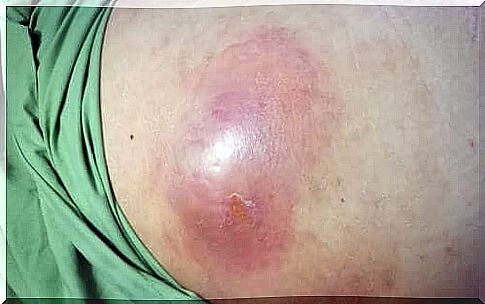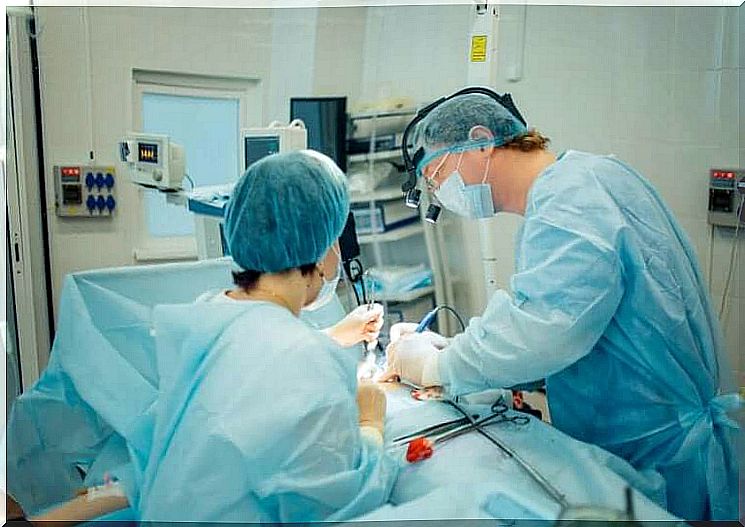Intra-abdominal Abscesses: What Are They?

Intra-abdominal abscesses are accumulations of concentrated pus within the abdominal cavity. They can form anywhere on the abdomen.
They mainly form as a result of surgery, trauma, or diseases involving abdominal infection or inflammation, particularly when peritonitis or perforation occurs.
Causes of intra-abdominal abscesses

Some of the causes of intra-abdominal abscesses are as follows:
- Infections caused by inflammation of organs such as the gallbladder and appendix, or by perforation of the small or large intestine.
- Severe abdominal trauma.
- Infections that arise in the post-operative phase of abdominal surgery.
Symptoms
The most frequent symptoms of intra-abdominal abscesses are general malaise, fever and abdominal pain. Sometimes, when performing physical exploration, masses in the abdomen may be felt to the touch.
Intra-abdominal abscesses can form within a week of perforation or peritonitis. However, postoperative abscesses can appear up to 2-3 weeks after surgery and, rarely, up to several months later.
Although symptoms may vary, most abscesses present with fever and abdominal pain. Symptoms can be mild or intense, nausea, anorexia and weight loss are common. Other abscesses, such as that of the Douglas cable, can cause diarrhea. Also, proximity to the bladder can cause urgent urination and pollakiuria.
Subphrenic abscesses can also cause chest symptoms, such as dry cough, subphrenic chest pain, and dyspnea. In general, there is pain on palpation of the place where the abscess is located. Larger abscesses appear as a mass to the touch.
Types of intra-abdominal abscesses
Intra-abdominal abscesses are divided into intraperinoteal, retroperitoneal or visceral. Many intra-abdominal abscesses occur as a result of perforation of a viscera or colon cancer.
Others form due to the spread of infection or subsequent inflammation in conditions such as appendicitis, diverticulitis, Crohn’s disease, pancreatitis, inflammatory pelvic disease, or any disorder that causes generalized peritonitis.
Abdominal surgery, particularly that afferent to the digestive system, is another significant risk factor. The peritoneum can become infected during or after surgery.
Undrained intra-abdominal abscesses can damage adjacent structures and vessels, which can lead to bleeding or thrombosis. They can also rupture in the intestine or peritoneum and even form a skin or genitourinary fistula. However, a lower abdominal access can go down to the thigh.
Diagnosis of intra-abdominal abscesses
The diagnosis is made following a computed axial tomography. This technique also allows you to choose the best way to drain and treat the infection.
MRI is another highly accurate imaging test that is performed in specific cases. But there are other simpler tests, such as abdominal ultrasound, which however does not offer quality images like other tests.
What is the right medical treatment?

Treatment involves administration of antibiotics and percutaneous or surgical drainage. Almost all intra-abdominal abscesses require drainage, whether through percutaneous catheters or surgery.
Catheter drainage may be indicated when the cavities in the abscess are large and when the drainage route does not pass through the intestine, and when neither organs nor pleura or peritoneum are infected. Furthermore, it is necessary when the source of the infection is under control and the pus is liquid enough to be able to flow through the catheter.
Antibiotics can limit the spread of infection through the blood and should be given before and after surgery. Therapy requires drugs that react on contact with the intestinal flora, such as gentamicin and metronidazole.
To summarize, the treatment of intra-abdominal abscesses consists of the drainage of pus, followed by the administration of antibiotics. Drainage is done through the skin (percutaneous drainage) and can be done on the basis of imaging tests, such as ultrasound. In some more severe cases, surgical drainage may be required, which requires surgery in the operating room.









